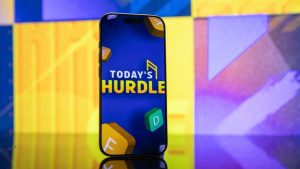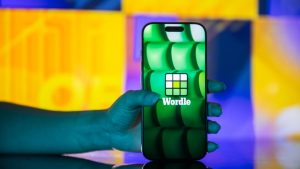
Hooked in three seconds: The science behind high-performing mobile game ads
Ivan Razmakhov from AdQuantum explains why your mobile ad has exactly three seconds to prove itself – and how to make every millisecond count
Image credit: Priscilla Du Preez on Unsplash
Ivan Razmakhov, head of creative production at mobile marketing firm AdQuantum, discusses the science behind mobile advertising.
Attention is the main currency in today’s world – the precious resource everyone is fighting for.
Every second counts, and in the case of the mobile industry, adverts have three seconds to pull the user into your app, or lose them forever in a sea of content. To win this battle and attract high-quality leads, you need to hook users with precision, clarity, and power.
The science of attention
Let’s examine attention from a scientific perspective. What happens in our brain in just three seconds? Modern cognitive science defines four types of attention: bottom-up, top-down, emotional, and cognitive.
Bottom-up attention is instantaneous – it reacts rapidly to loud sounds, bright colours, or visual triggers. It’s an automatic reaction. It turns on when we receive an instant notification on our phones.
Top-down attention, on the other hand, needs effort. We activate it while doing a challenging task that we are interested in. Strong emotions – such as surprise, fear, joy, or empathy – trigger emotional attention, while cognitive attention is about fast recognition. It happens when we catch something we already know, such as a familiar brand, face, or situation.
Top-down
Bottom-up
Emotional
Cognitive
Speed
Slow
Quick
Quick
Quick
Bandwidth
Large
Narrow
Narrow
Narrow
Mental effort
High
Low
Low
Low
Process
Controlled
Automatic
Automatic
Automatic
Flexibility
High
Low
Low
Low
Brain regions
Frontal and parietal lobe
Thalamus and sensory areas
Thalamus, amygdala, and basal ganglia
Temporal lobe
As marketers, we need to capture at least one type of attention within three seconds, and we must also remember that user attention shifts every eight seconds on average, a number that continues to decline annually.
Here’s the key: the winning strategy behind a successful creative (i.e., all the elements of a mobile ad) is to cleverly combine all types of attention. First, it’s essential to gather bottom-up attention with a visual or sound trigger. Then you can smoothly transition to emotional and cognitive attention, and finally hook the audience with a logical and clear message (top-down attention).
Sounds great, right? However, here’s the thing: all of it should happen within three seconds.
Studies show that the faster attention switches, the higher the stress level. People learn to avoid useless content much more quickly. Cognitive load increases, which means content must not only be brief, but also crafted with surgical precision. It should be concise, clear, focused, and emotionally impactful.
How to make a creative that actually works
A good creative captures all levels of attention step by step. But more than that, it follows a simple formula: successful creative = strong hook + platform-native style + visual clarity.
The hook
A good hook works when a user immediately understands three things: what they want, what’s expected, and what they need to do. It must provide:
A clear promise or challenge
Visual contrast or surprise that grabs attention
A relatable moment that resonates emotionally
A clean design with no distractions from the core message
Action that keeps the eye engaged
In this context, it’s worth taking a closer look at one of the recent metrics that everyone’s been talking about: hook rate. You might be surprised, but the hook rate is often overrated. As mentioned above, the first three seconds matter, and the hook helps to stop users from scrolling away, but relying on it alone won’t save a campaign.
A high hook rate doesn’t guarantee clicks, installs, or conversions. Users might stay for the visuals, but if there’s no clear message afterward, they’ll drop off. Shock value grabs attention, but it often attracts the wrong audience, which leads to poor results down the line.
The hook is just the entry point. To drive clicks, you need a full funnel: engagement, product demonstration, emotional payoff, and call-to-action (CTA). Structure and narrative logic are what convert, not just attention-grabbing intros.
Platform-native approach
When we talk about a platform-native approach, we mean two things.
The technical side: formats, sizes, durations, and placements. The closer your ad feels to native content, the more likely people are to stop scrolling and watch. For example, in a recent Creative Decode episode, we reviewed a creative for Business Empire: RichMan, and it wasn’t built for the format. It was just cropped from a horizontal video, with a cut-off hand on screen. It doesn’t look natural.
The creative logic: how stories are told and what visuals feel natural in that environment. It’s obvious, but it’s essential to always remember that what works well on Meta can fail on TikTok, and vice versa. Each platform has its user habits and content expectations.
Visual clarity
Visual clarity is essential today, especially in our content-saturated world. When we create ads, we must remember that we’re working within a minimal space – a small screen where there’s simply no room for visual clutter. If we want to communicate a message and drive action, the design must be clean, minimal, and instantly legible.
Keeping an eye on what’s currently peaking in popularity and what’s fading makes a real difference
Every element in the frame should help the viewer quickly grasp who it’s for, what’s happening, and why it matters. The transition to the app store or website needs to feel smooth and natural; otherwise, you risk losing the user even after a strong initial hook. This principle applies across all types of creatives, but it’s especially crucial for playables.
It’s also crucial to stay aligned with modern visual trends. Keeping an eye on what’s currently peaking in popularity and what’s fading makes a real difference. Reflect on how TikTok has reshaped editing standards: now, videos with rapid, clear scenes dominate attention. Staying in sync with these shifts is key if you want your creatives to remain relevant and impactful.
Quick creative formats overview
We’ve already talked about what makes an ad creative work in general. Now it’s time to get more specific: which format to use, when, and why.
A creative isn’t just about design, but also about why we’re making it, when we show it, and what goal it serves. Different goals need different kinds of creatives. That’s why we choose the format based on what we want to achieve, the platforms we’re using, the resources we have, and who we’re trying to reach.
Recipe for a successful creative
If you asked me whether we have a recipe for a successful creative, I’d say that technically, no such recipe exists. But I’ll try to sketch something close. Of course, it’s subjective, but I’m sure that each of these points can help improve performance (even if not dramatically, every bit counts).
Adjust, test, and refine to find what truly works for your product and audience.
In the end, it all boils down to a simple truth: a great creative is more than just a catchy hook. It’s the product of smart work, viewing problems from multiple angles: through the lens of science, industry expertise, and current trends. The key is to stay focused and craft stories that seamlessly fit the chosen platform. Don’t obsess over flashy metrics – what really counts is the quality of traffic and having systems that foster fresh ideas and formats.
The bottom line is clear: by 2025, it won’t be the brands with the biggest budgets that come out on top, but the ones who are more attentive and agile.











